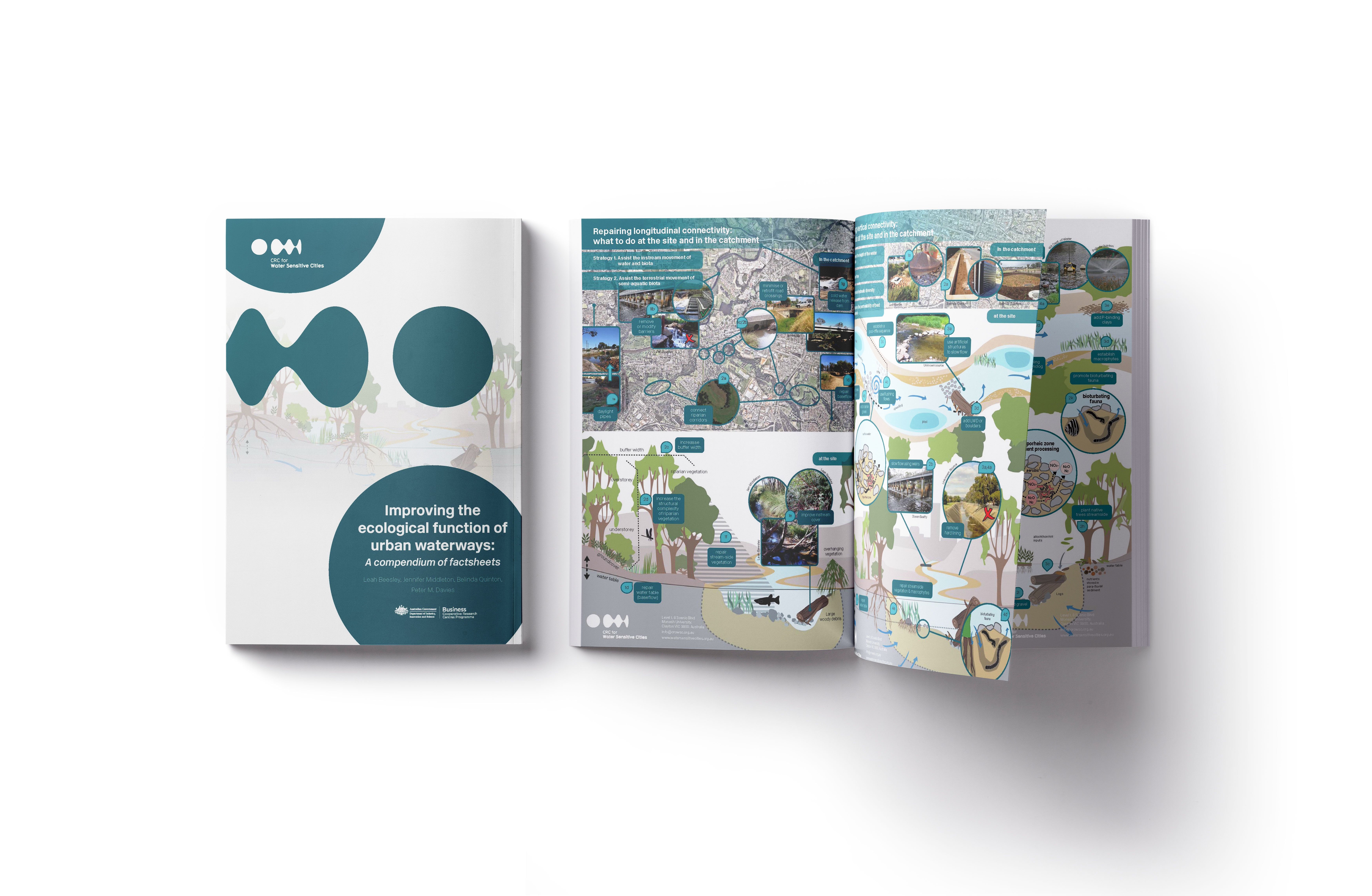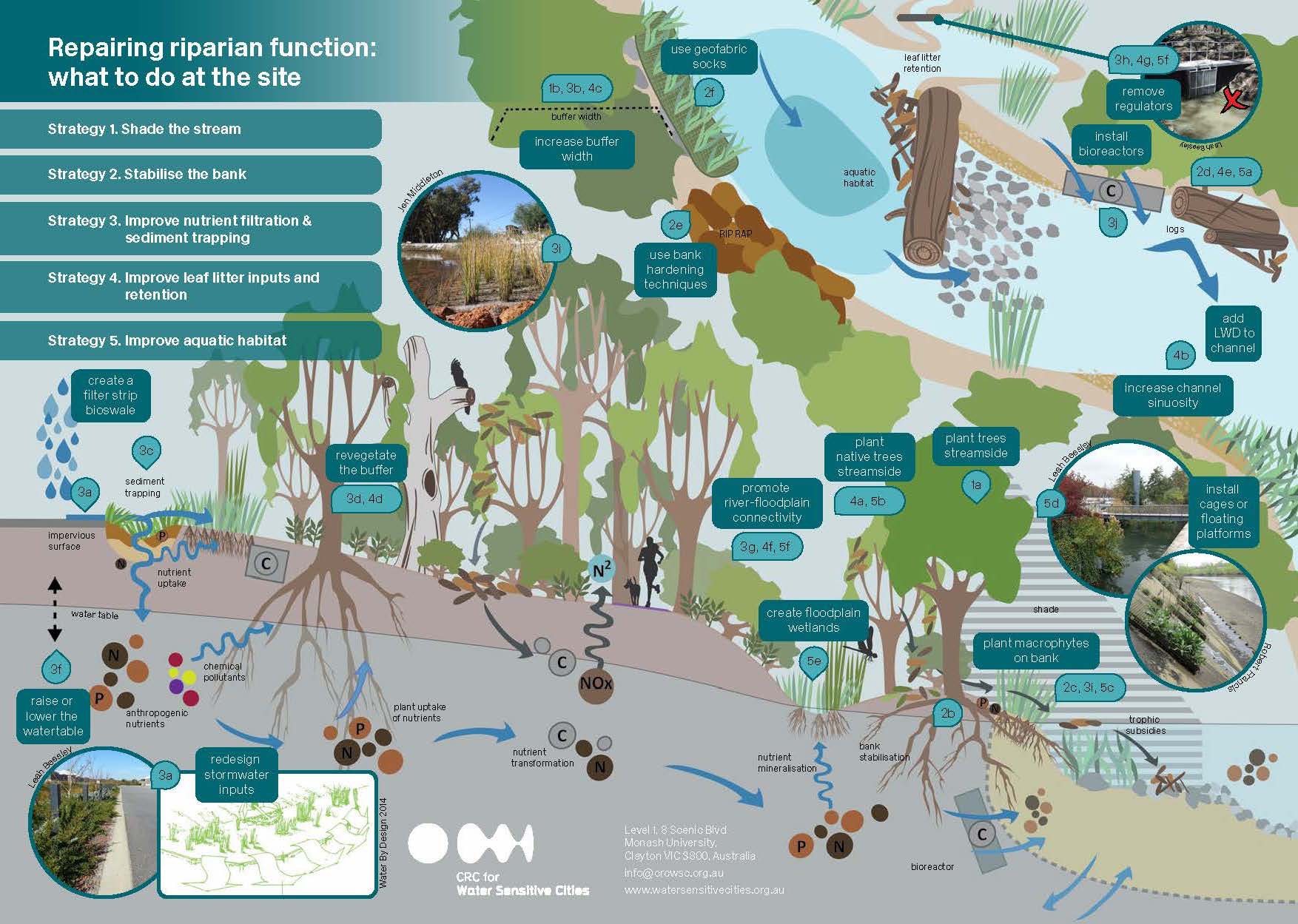New factsheets offer strategies for restoring urban waterways

The CRCWSC has just released a new product designed to walk practitioners through the nine components of repairing or designing a living stream site on a flowing urban waterway, and to support them in working out which actions to take.
The 13 factsheets about improving the ecological function of urban waterways cover nine different ecological components of flowing waterways: flow, geomorphology, riparian, connectivity (longitudinal, lateral, vertical), water quality (nutrients, physico-chemistry including toxicants) and biota. Most components have two factsheets—one for what to do at the site scale and the other for what to do at the catchment scale—so practitioners have more context and can work at both spatial scales.

Each factsheet gives the practitioner strategies to follow and the situations where the strategy will be most suitable and effective. Actions, rationales, and the relevant technical guidelines to follow are outlined for each strategy, as are clear diagrams and a list of useful supporting documents.
The factsheets aren’t prescriptive but are instead a useful resource for better understanding the environmental factors and urban constraints at a restoration site, and how each might be addressed.
Supporting the factsheets is a decision making tool called RESTORE, to help practitioners determine which components of urban waterway repair or design to focus on. The tool asks practitioners questions about the environmental and urban setting of their restoration site and identifies the ecosystem components likely to be most relevant to the site or catchment, so they can follow the relevant factsheets.
The 13 factsheets in the set are:
- Repairing flow: what to do at the site
- Repairing flow: what to do in the catchment
- Repairing geomorphology: what to do at the site and in the catchment
- Repairing longitudinal connectivity: what to do at the site and in the catchment
- Repairing lateral connectivity: what to do at the site and in the catchment
- Repairing vertical connectivity: what to do at the site and in the catchment
- Repairing riparian function: what to do at the site
- Reducing nutrients: what to do at the site
- Reducing nutrients: what to do in the catchment
- Repairing water quality: what to do at the site
- Repairing water quality: what to do in the catchment
- Repairing biota: what to do at the site
- Repairing biota: what to do in the catchment
The factsheets are also available as a compendium.
We hope practitioners find these factsheets a useful starting point and an instructive resource for restoring urban waterway sites, such as a creek/stream channel, a constructed drain, a lowland river or a living stream built in a new urban development.